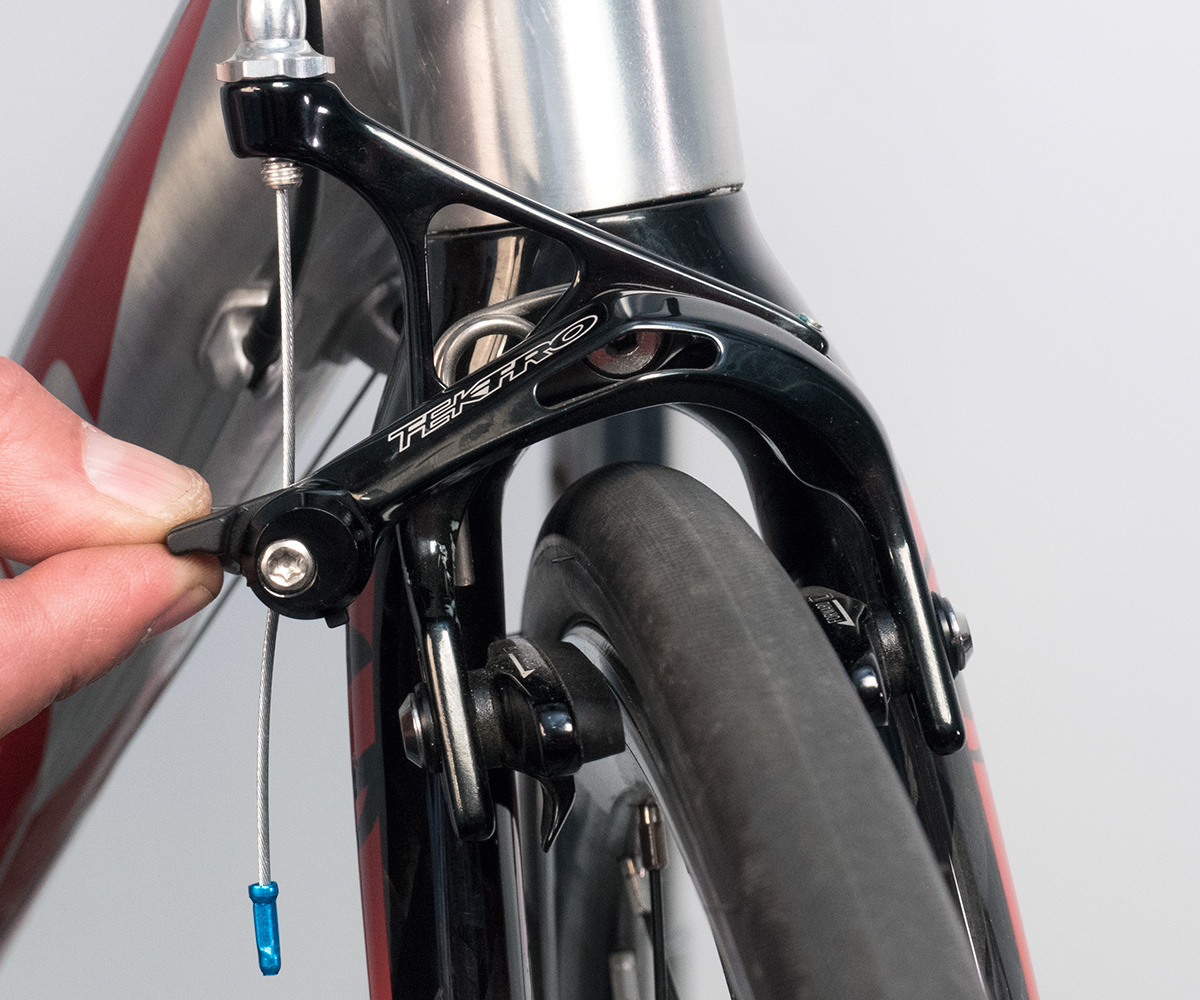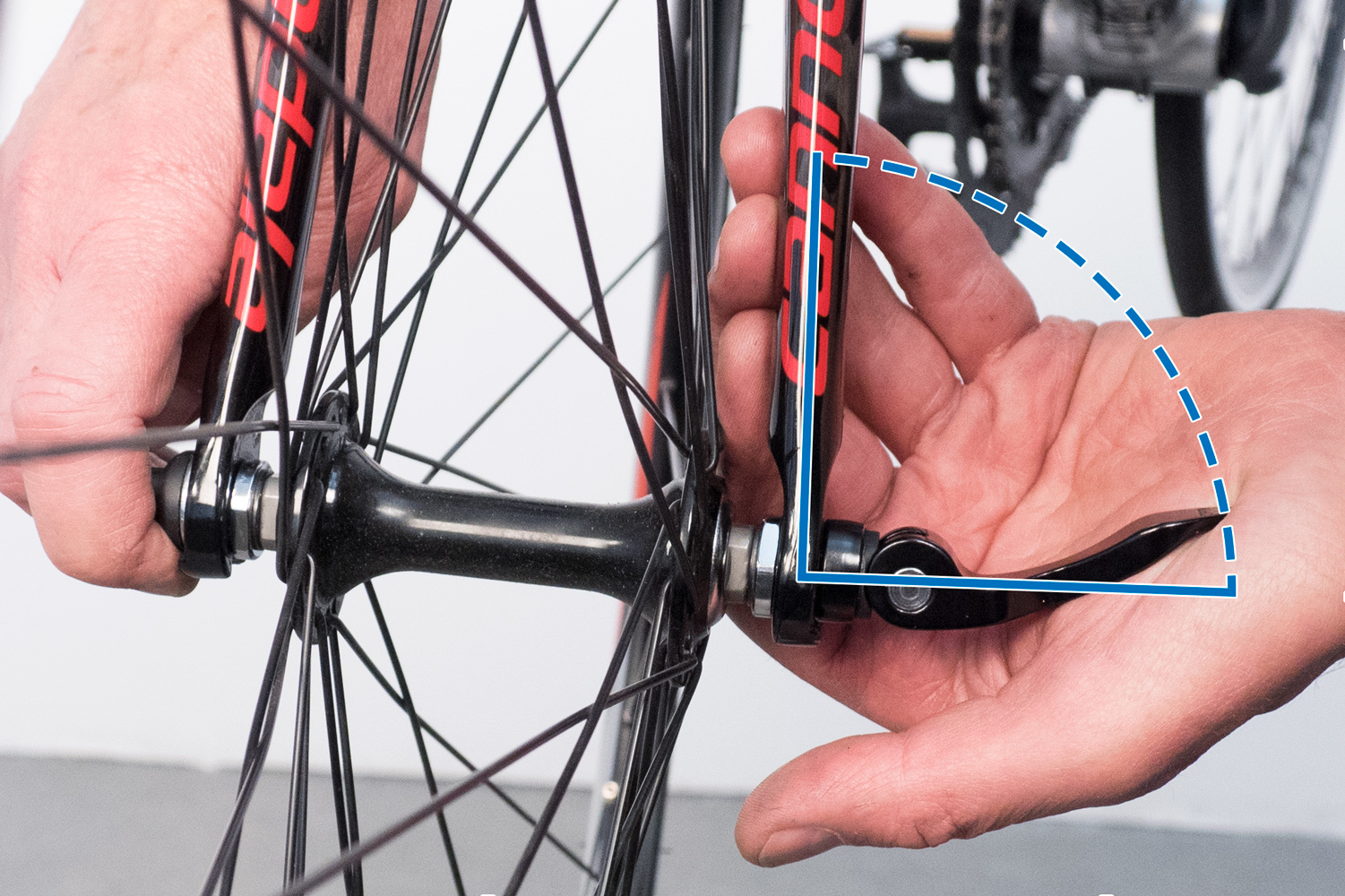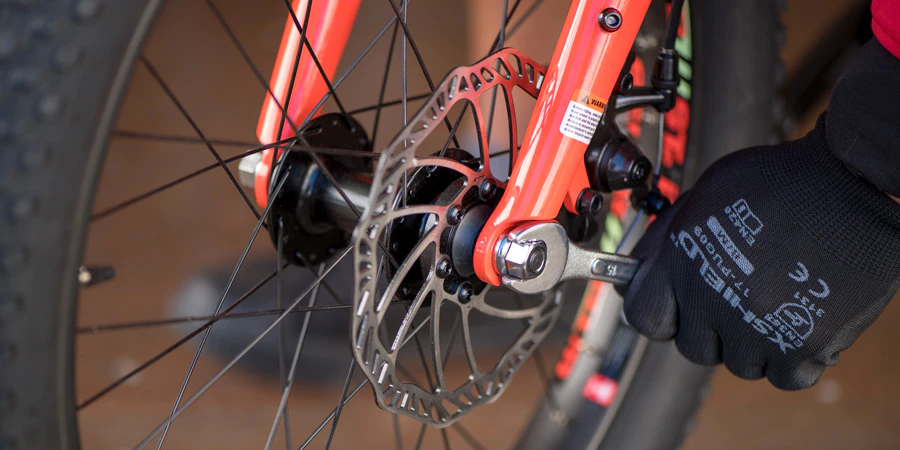Skills
Bike maintenance is wide-ranging and will oftentimes require special tools and professional help, but you don’t have to be an experienced bike mechanic to fix most of the common maintenance issues. In this section, basic skills will be covered so you can keep your bike rolling smoothly without bringing it to the shop.
Flats
One of the most important skills in bike maintenance is fixing a flat tire. No matter how or where you ride, getting a flat is practically inevitable. It’s also relatively easy to fix, and doesn’t require any special tools only found in bike shops. The five steps to fixing a flat are as follows: - Taking the wheel off - Removing the inner tube - Finding the cause of the flat - Patching or replacing the tube - Reinstalling the wheel
Taking the Wheel Off
To take the wheel off, first release your rim brakes if you have them.


Then you’ll need to release the wheel from the frame. This step is made a lot easier if you have a bike stand, but you can also flip your bike upside down and rest the saddle and handlebars on the ground. If you have a quick-release, simply open the lever and remove the wheel.

Otherwise, you'll need to loosen the bolts with a wrench. Bolts can come in different sizes, but the most common is 15mm. Make sure to use the right size wrench when removing bolts. Once loosened, you can remove the wheel.

If you're removing the rear wheel, shift your chain onto the smallest cog of the cassette. Then, either open the quick-release lever if you have one or loosen the bolts. When removing the wheel, push the rear derailleur back so that the chain lifts off of the cog, then remove the wheel from the dropouts.
Removing the Inner Tube
To remove the inner tube, first deflate your tire. For a Schrader valve, remove the cap and press on the pin in the center of the valve. For a Presta valve, remove the cap and loosen the smaller valve at the top, then press on the pin. In both cases, you will hear the air coming out of the tire. If you’re unsure what type of valve you have, a Schrader valve is the same type of valve found on car tires, and Presta valves are long and skinny. Next, you’ll need to remove the tire. To do so, unseat the tire bead by pressing the bead edge in toward the center of the rim and working your way around the rim. Then move the bead up and over the outside edge of the rim.

With the tire bead unseated and one side over outside the edge of the rim, you can remove the tire completely. Then, remove the inner tube by gently pulling it out of the rim.
Finding the Cause of the Flat
Inspect the inner tube for punctures or cuts. If none are easily visible, you can either inflate the tube and listen for escaping air, or submerge the tube in water and look for bubbles. It’s important to inspect the tire as well, as there might be an embedded object such as glass or a nail that was the cause of the flat.
Patching or Replacing the Tube
When it comes to patching vs replacing a tube, you should replace the tube any time the damage is too extensive to patch, when a patch job fails to hold, or when the tube’s valve is damaged. To patch a tube, you’ll want to clean the area that needs patching and sand it down a little with sandpaper so the glue can stick a little easier. Apply and spread the glue and then place the patch on the tube and hold it in place for a few seconds.

Reinstalling the Wheel
To reinstall the wheel, you’ll want to reverse the steps above in taking the wheel off. Start by reinstalling the tire by pushing one edge or bead of the tire in the rim. Then, partially fill the inner tube with air and insert the valve into the valve hole of the rim before pulling the inner tube into the rim. Then you can push the other edge/bead of the tire into the rim. Inflate the tire, making sure that the air holds. Then, you’ll want to put the wheel back in the dropouts, and either tighten the bolts with a wrench or close the quick-release lever.
There you have it! Now you can repair those pesky flats or swap out your tires whenever you please.
The ABC's
The next skills to be covered are known as the ABC’s, which stands for air, brakes, and chain. The ABC’s act as a pre-ride checklist to ensure that your bike is safe to ride and to help your bike last longer.
Air:
The best way to prevent flats is to ride with properly inflated tires. After every couple of rides you should inflate your tires. You can find the recommended tire pressure one the sidewall of your tire. When checking your air pressure, you can also double check that your axle bolts or quick-release levers are properly tightened. It is also recommended that you bring a patch kit and small pump with you when you ride.
Brakes:
It is important to check that your brakes are properly working before you ride. Give your brake levers a squeeze and make sure that they engage smoothly. You should also check on the condition of your brake pads and make sure that they aren’t completely worn through before riding.
Chain:
Check your chain and gears before riding, and make sure that the bike shifts smoothly and there are no issues with the drive chain. After a wet ride, you should lubricate your chain to prevent rusting and wear, as well as lengthen the chain’s lifespan.
Cleaning the Bike
Cleaning your bike is a skill that is often overlooked, but it is essential to keeping your bike in working order and it vastly improves your bike's longevity. You can clean your bike monthly, weekly, or even more frequently if you choose to do so. You can easily clean your bikes with some diluted dish soap, degreaser, rags or brushes, and lubricant. Most of the bike can be cleaned with a rag and soap, but the drive chain requires more attention. You should use a degreaser when your chain and cassette is especially dirty, followed by a chain lubricant. It is important to keep the chain clean and lubricated.